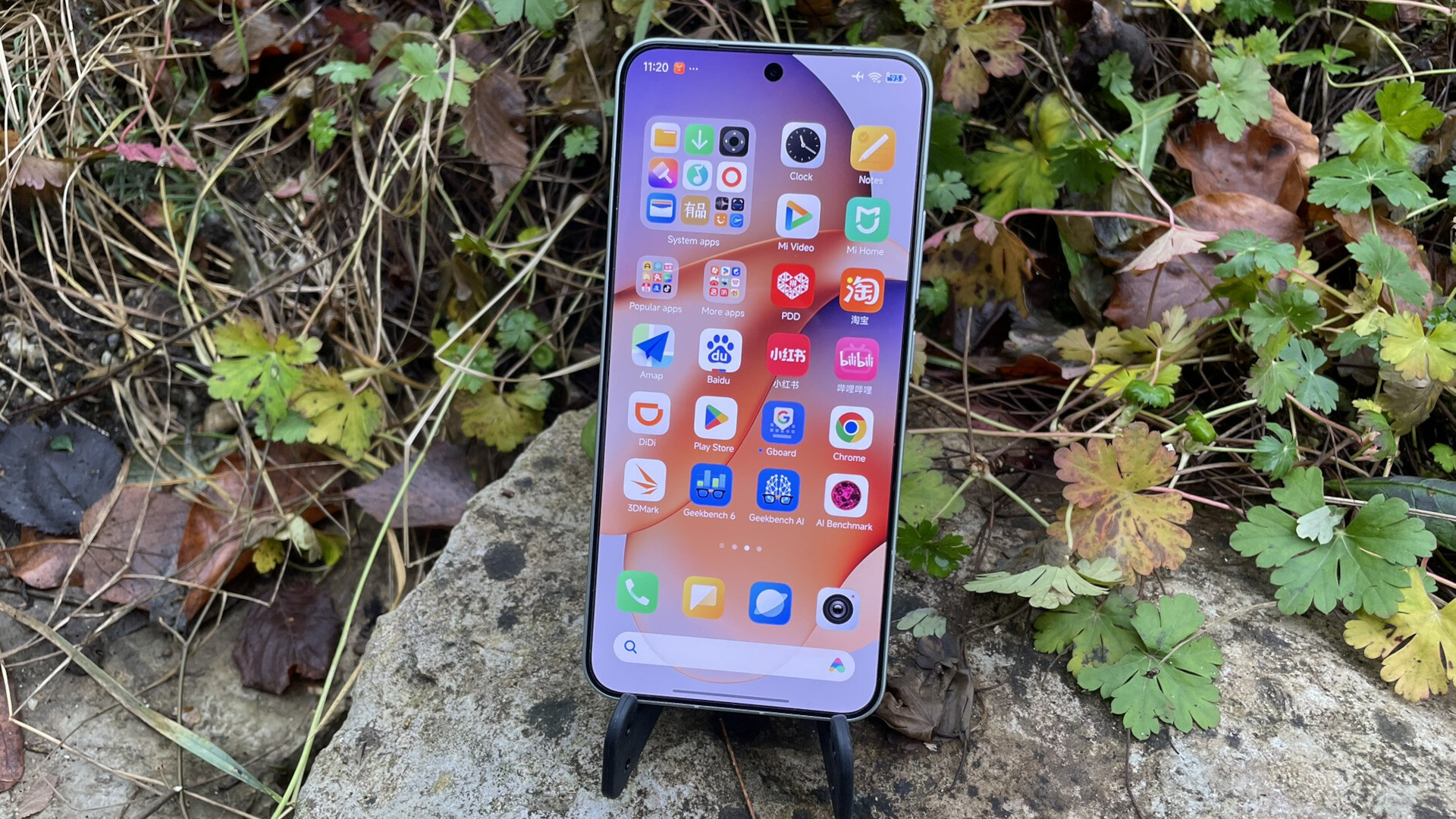
Xiaomi 15 smartphone review - Xiaomi's flagship phone sets new benchmarks for performance and battery life
Recipe for success.
The Snapdragon 8 Elite makes the Xiaomi 15 one of the fastest Android phones currently on the market. Plus, the 6.36-inch Xiaomi flagship has a lot more to offer, such as record runtimes and an even brighter display that can reach peaks of 3500 nits. Our test will reveal how much the competition has to live up to.Manuel Masiero, 👁 Daniel Schmidt (translated by Daisy Dickson) Published 🇩🇪 🇪🇸 ...
Verdict on the Xiaomi 15 - Even faster with better endurance
Xiaomi has further improved its flagship smartphone. With one exception, the Xiaomi 15 has inherited the powerful connectivity of its predecessors and is now better equipped to face the competition from Apple. The message is clear: If you're on the hunt for a compact smartphone, then the 6.36-inch Xiaomi 15 is a good alternative to the Apple iPhone 16 or iPhone 16 Pro. The Xiaomi flagship offers plenty of arguments in its favor, three of which stand out in particular.
Its 120 Hz LTPO OLED display is now even brighter, with its HDR brightness surpassing the 2,500-nit mark. Plus, the Snapdragon 8 Elite makes the Xiaomi 15 one of the fastest Android smartphones currently on the market—results such as its AnTuTu score of 2,677,100 points underline this clearly. Moreover, a 17% larger battery helps give the Xiaomi 15 astounding runtimes that almost no other phone manages to come close to.
The list of negatives is relatively short if you disregard the limitations of our Chinese test version, as these shouldn't be an issue with the global version. Then, there are really only two disadvantages: The Snapdragon 8 Elite has a tendency to overheat under load, and the smaller tele-zoom (which has shrunk from the Xiaomi 14's 3.2x down to 2.6x) removes a bit of flexibility from its Leica camera system.
Pros
Cons
Price and availability
The Xiaomi 15 currently isn't available to purchase in the United States. However, you can order it as an import device from our lender TradingShenzhen for around $800.
Possible alternatives compared
Image | Model / Review | Price | Weight | Drive | Display |
|---|---|---|---|---|---|
| Xiaomi 15 Qualcomm Snapdragon 8 Elite ⎘ Qualcomm Adreno 830 ⎘ 12 GB Memory, 512 GB | Amazon: 1. $11.99 Ibywind for Xiaomi 15 Ultra ... 2. $11.99 Ibywind 2 Pack Screen Protec... 3. $7.99 Suttkue for Xiaomi 15 Screen... List Price: 760€ | 191 g | 512 GB UFS 4.0 Flash | 6.36" 2670x1200 460 PPI OLED | |
| Apple iPhone 16 Apple A18 ⎘ Apple A18 GPU ⎘ 8 GB Memory, 512 GB SSD | Amazon: 1. $9.99 iPhone 17 16 15 Charger Fast... 2. $5.98 Ailun Screen Protector for i... 3. $47.49 Apple iPhone 16 Pro Silicone... List Price: 1329€ | 170 g | Apple 512GB NVMe | 6.10" 2556x1179 460 PPI Super Retina XDR OLED | |
| Google Pixel 9 Pro Google Tensor G4 ⎘ ARM Mali-G715 MP7 ⎘ 16 GB Memory, 128 GB | Amazon: 1. $749.00 Google Pixel 9 Pro XL - Unlo... 2. $824.04 Google Pixel 9 Pro XL - Unlo... 3. $1,309.00 Google Pixel 9 Pro Fold - Un... | 199 g | 128 GB UFS 3.1 Flash | 6.30" 2856x1280 495 PPI OLED | |
| Samsung Galaxy S24 Samsung Exynos 2400 ⎘ Samsung Xclipse 940 ⎘ 8 GB Memory, 256 GB | Amazon: List Price: 899€ | 167 g | 256 GB UFS 4.0 Flash | 6.20" 2340x1080 416 PPI Dynamic AMOLED 2X | |
| Sony Xperia 5 V Qualcomm Snapdragon 8 Gen 2 ⎘ Qualcomm Adreno 740 ⎘ 8 GB Memory, 128 GB | Amazon: $999.00 List Price: 999€ | 182 g | 128 GB UFS 3.1 Flash | 6.10" 2520x1080 449 PPI OLED | |
| Xiaomi 14 Qualcomm Snapdragon 8 Gen 3 ⎘ Qualcomm Adreno 750 ⎘ 12 GB Memory, 256 GB | Amazon: $789.99 List Price: 700€ | 193 g | 256 GB UFS 4.0 Flash | 6.36" 2670x1200 460 PPI OLED |
Table of Contents
- Verdict on the Xiaomi 15 - Even faster with better endurance
- Specifications: The Xiaomi 15
- Case - From glass to crocodile leather, everything is covered
- Connectivity - The Xiaomi 15 with up to 16 GB RAM and 1 TB storage
- Software - HyperOS 2.0 based on Android 15
- Communication and GNSS - The Xiaomi phone with WiFi 7 and dual-SIM
- Telephone features and call quality - The Xiaomi 15 import version without eSIM support
- Cameras - A Leica triple-camera with a 50-MP resolution
- Accessories and warranty - 90-watt power supply included
- Input devices & operation - The Xiaomi 15 with an ultrasonic fingerprint sensor
- Display - up to 3,500 nits in HDR mode
- Performance - The Xiaomi 15 with the Snapdragon 8 Elite
- Games - Graphics power in abundance
- Emissions - The Snapdragon 8 Elite overheats
- Battery life - Runs and runs and runs
- Notebookcheck total rating
Xiaomi is relaunching its flagship smartphone. The Xiaomi 15 has been available in China since the end of October, but should find its way to us by early 2025 at the latest. However, we didn't want to wait that long and have already taken a closer look at the Chinese version, which should only differ from the global version in a few ways.
Xiaomi hasn't changed anything about the predecessor model's size of 6.36 inches. This makes the Xiaomi 15 one of the most compact high-end smartphones currently available. As our test showed, despite its comparatively small dimensions, the Android 15 phone is very far ahead of the competition in terms of its performance and battery life, outperforming the Xiaomi 14 in both respects.
Specifications: The Xiaomi 15
Case - From glass to crocodile leather, everything is covered
The Xiaomi 15 is slightly slimmer, thinner and more lightweight than the Xiaomi 14. Visually, it could almost be an alternative to the iPhone thanks to its flatter and more angular design. The glass version uses a matte back cover that barely attracts fingerprint marks.
Its bezels have also been reduced in size, now measuring in at only 1.4 millimeters in width, resulting in an improved display-to-surface ratio of 94 percent. The same as with the Xiaomi 14, a striking camera unit on the back protrudes a few millimeters from the phone's body. However, the LED flash is no longer part of the lens ensemble, instead sitting to the right of it.
The case's materials once again consist of glass and aluminum. The Xiaomi 15 makes use of so-called Dragon Crystal Glass which, according to the manufacturer, is said to be ten times more robust than the Xiaomi 14's Gorilla Glas Victus. All-in-all, its build quality is great and all gaps are tight and even. The Xiaomi 15 wasn't fazed by our twisting attempts, and it is IP68 protected against dust and water.
The Xiaomi smartphone comes in a glass version which, like our test device, has a mint-green back cover, as well as in the colorways light blue, white and black. Buyers in China can additionally access a colorway called Bright Silver, whose back cover features a wave pattern. In addition, there is a visually striking Diamond Limited Edition version of the phone with crystals inside its aluminum frame and a crocodile leather-look back cover. In these versions, the case's thickness increases from 8.1 to 8.5 and 8.4 millimeters respectively.
Connectivity - The Xiaomi 15 with up to 16 GB RAM and 1 TB storage
The Xiaomi 15 has retained the powerful connectivity of its predecessor—with a few extras, although these are only minor details. Instead of an optical fingerprint sensor, it now has an ultrasonic fingerprint sensor under its display and the screen's touch sampling rate has been increased from 240 to 300 Hz.
In addition to an IR blaster, its features include dual SIM, WiFi 7, NFC, Bluetooth 5.4, stereo speakers and dual-band GPS. However, it still doesn't have a UWB chip, as used in iPhones, for example. The USB-C port with its USB 3.2 connection ensures fast data transfers. It achieved speeds of 346 MByte/s during the copying test using the M2.SSD Samsung 980 Pro (USB 3.2 Gen. 2).
On the Chinese market, Xiaomi offers its flagship phone in four storage variants: 12/256 GB, 12/512 GB, 16/512 GB and 16/1024 GB. It is not yet known whether all of these will also be available with the global version.
Software - HyperOS 2.0 based on Android 15
The Xiaomi 15 runs HyperOS 2.0 based on Android 15. Xiaomi's user interface can be operated practically the same as HyperOS 1.0 on the Xiaomi 14, which in turn is very similar to standard Android. Under the hood, however, a lot has changed.
In addition to various system optimizations, these changes naturally also concern the trending topic of AI. For example, HyperOS can be used to generate texts, scan ID cards and find photos based on a description. New personalization options are also included, such as new designs and widgets for the start and home screens as well as animated wallpapers. In the global version, however, the AI features are likely to look even different thanks to Xiaomi's cooperation with Google.
HyperOS 2.0 has been rolled out for Xiaomi's smartphones, tablets and smartwatches since November. Xiaomi's founder, Lei Jun, has published the schedule for this on his X account.
In the Chinese version, HyperOS 2.0 only understands English as a system language in addition to simplified Chinese, traditional Chinese, Tibetan and Uyghur. The Google Store is not installed, but can be retrofitted immediately via Xiaomi's GetApps app store because the Google framework is already running in the background. The Xiaomi 15 also supports DRM Widevine L1.
Xiaomi hasn't provided any information on our Chinese test version's update period. However, as with its predecessor, it should be supplied with 4 years of OS upgrades and 5 years of Android security patches. At the time of testing in early December, its Android security patches were up to date as of November 1.
Sustainability
Xiaomi hasn't provided any precise information about the proportion of recycled materials used in its smartphones. However, according to the manufacturer, the amount of recycled aluminum, gold and copper has been increased for smartphone components. The company also aims to keep its own ecological footprint as small as possible through measures such as the production of plastic material from discarded fishing nets and trade-in programs.
Xiaomi aims to recycle a total of 38,000 tons of electronic waste by 2026. So far, 44 percent of this target has been reached. The company also follows the provisions of the OECD Due Diligence Guidance for Responsible Supply Chains of Minerals from Conflict-Affected and High-Risk Areas and the RBA Responsible Minerals Initiative (RMI), which regulate the procurement of conflict materials such as tin, tungsten, tantalum, gold and cobalt.
Communication and GNSS - The Xiaomi phone with WiFi 7 and dual-SIM
The Xiaomi 15 supports the fastest Wi-Fi standard currently available, namely WiFi 7. Connected to our Asus ROG Rapture GT-AXE11000 reference router, it achieved a high data throughput using the 6 GHz band, peaking at just under 1,800 Mbps. However, during our test, its transfer rates in the receiving direction weren't particularly high at first, as they started at a low 628 MBit/s.
In our import version, its cellular bands are optimized for the Chinese market. Surprisingly, its frequency support also includes LTE band 20, which hardly plays a role in Asia, but is all the more important in Europe—especially when it comes to good cellular reception in rural areas.
The global version of the Xiaomi 15 is likely to support significantly more cellular bands than the Chinese version, so no restrictions are to be expected in this respect.
| Networking | |
| Xiaomi 15 | |
| iperf3 transmit AXE11000 | |
| iperf3 receive AXE11000 | |
| iperf3 transmit AXE11000 6GHz | |
| iperf3 receive AXE11000 6GHz | |
| Apple iPhone 16 | |
| iperf3 transmit AXE11000 | |
| iperf3 receive AXE11000 | |
| iperf3 transmit AXE11000 6GHz | |
| iperf3 receive AXE11000 6GHz | |
| Google Pixel 9 Pro | |
| iperf3 transmit AXE11000 | |
| iperf3 receive AXE11000 | |
| iperf3 transmit AXE11000 6GHz | |
| iperf3 receive AXE11000 6GHz | |
| Samsung Galaxy S24 | |
| iperf3 transmit AXE11000 | |
| iperf3 receive AXE11000 | |
| Sony Xperia 5 V | |
| iperf3 transmit AXE11000 | |
| iperf3 receive AXE11000 | |
| Xiaomi 14 | |
| iperf3 transmit AXE11000 | |
| iperf3 receive AXE11000 | |
| iperf3 transmit AXE11000 6GHz | |
| iperf3 receive AXE11000 6GHz | |
| Average Wi-Fi 7 | |
| iperf3 transmit AXE11000 | |
| iperf3 receive AXE11000 | |
| iperf3 transmit AXE11000 6GHz | |
| iperf3 receive AXE11000 6GHz | |
| Average of class Smartphone | |
| iperf3 transmit AXE11000 | |
| iperf3 receive AXE11000 | |
| iperf3 transmit AXE11000 6GHz | |
| iperf3 receive AXE11000 6GHz | |
The Xiaomi phone uses all important satellite navigation services to determine its current position, such as GPS, Glonass, Galileo, Beidou and QZSS. This is usually done in dual-band mode and this was reflected in our test with a location accuracy of 3 meters. It didn't matter whether we were outdoors or indoors.
The device is very suitable for navigation tasks. It recorded the route of our 10-kilometer bike ride almost as accurately as the Garmin Venu 2 fitness smartwatch, which served as our reference device.
Telephone features and call quality - The Xiaomi 15 import version without eSIM support
The Xiaomi 15 comes with a dual SIM slot and supports VoLTE as well as Wi-Fi calls. eSIMs cannot be activated on our test device. However, this functionality should be included in the global version.
In our test, the Xiaomi phone boasted good call quality and transmitted voices clearly and distinctly. In hands-free mode, background noise seemed to be filtered out quite effectively, even in noisy environments.
Cameras - A Leica triple-camera with a 50-MP resolution
The Xiaomi 15's selfie camera has a resolution of 32 MP and records videos at up to 4K and at 60 frames per second. It takes good pictures and can use the full 32 MP without pixel binning
Xiaomi has also stuck to its cooperation with Leica when it comes to its new flagship phone. The camera app therefore again features the two Leica image modes called Leica Vibrant (more saturated colors) and Leica Authentic (realistic colors). The lens composition has also remained the same. The main telephoto and ultra-wide-angle cameras each feature 50 MP.
The same as with the Xiaomi 14, its main camera uses the 1/1.31-inch Light Hunter 900, an OIS-stabilized sensor that shoots 12.5 MP photos using 4-in-1 pixel binning. In good lighting conditions, the images boast high sharpness, natural colors and vivid contrasts.
The phone's ultra-wide-angle camera also uses 4-in-1 pixel binning and has a similar color balance to the main camera. However, it can't come close to its level of detail and struggles with blurring at the edges of the image.
The OIS-stabilized telephoto lens has even taken a small step backward compared to the Xiaomi 14. Instead of a 3.2x optical zoom and a focal length of 75mm, it now only features a 2.6x zoom and a focal length reduced to 60mm. Nevertheless, its picture quality is solid and the telephoto lens can capture lots of detail up to a magnification of around 5x.
Its main camera records good-quality videos at up to 8K at 24 FPS. The ultra-wide-angle and telephoto lenses can record up to 4K at 60 frames per second. You can switch back and forth between all three lenses while recording.
Image comparison
Choose a scene and navigate within the first image. One click changes the position on touchscreens. One click on the zoomed-in image opens the original in a new window. The first image shows the scaled photograph of the test device.
Daylight photo 1Daylight photo 2Ultra-wide angle5x zoomLow-light photoIn controlled lighting conditions, the main camera proved that it could capture colors relatively accurately, but suffered a few inaccuracies when it came to dark brown and green tones. The main camera only depicted the test chart blurrily at 1 lux of residual light, but it was complete and clearly recognizable.

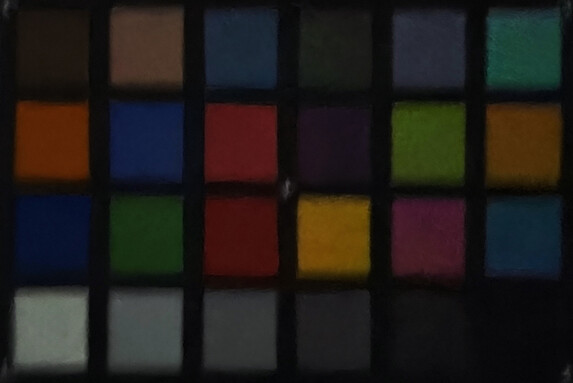
Accessories and warranty - 90-watt power supply included
The Chinese version of the Xiaomi 15 comes with a 90-watt power adapter (up to 20V/4.5A, plug type A), a USB-C cable, a SIM tool, a protective cover and a quick start guide. The power adapter will likely be omitted when it comes to the global version. Anyone who buys the smartphone from our loaner TradingShenzhen will receive a power adapter as a free gift.
TradingShenzhen offers a 12-month warranty on the Xiaomi 15. The global version is likely to come with a 24-month warranty, as is usual for Xiaomi.
Input devices & operation - The Xiaomi 15 with an ultrasonic fingerprint sensor
Powered by the Snapdragon 8 Elite, the Xiaomi 15's operation is very smooth and the device provides precise haptic feedback thanks to its precisely adjustable vibration motor. The system's speed stays consistently high even with lots of apps open at the same time. The phone can only be brought to its limits through test apps such as the Burnout benchmark, which puts the CPU and GPU under maximum load. The 120 Hz OLED screen works using a touch sampling rate of 300 Hz and implements inputs very accurately.
While the Xiaomi 14 was still equipped with an optical fingerprint sensor, the Xiaomi 15 uses an ultrasonic fingerprint sensor. As usual, it is located under the display, reacts even when the screen is off and boasts an excellent recognition rate. Alternatively, biometric authentication is also possible via 2D facial recognition, which works just as reliably in sufficient ambient light.
Display - up to 3,500 nits in HDR mode
The Xiaomi 15's 120 Hz display is very similar to that of its predecessor. The 6.36-inch LPTO OLED's resolution remains unchanged at 2,670 x 1,200 pixels and its pixel density is still 460 PPI. According to the spec sheet, however, its brightness is now higher. Instead of "only" 3,000 nits, the OLED panel should now shine at up to 3,200 nits.
When displaying an all-white background, we measured an average brightness of 1,018 cd/m², which doesn't sound very spectacular at first. When showing smaller image sections (APL18), however, the OLED panel increased to a brightness of up to 3,463 cd/m², in turn delivering on its promise. With a peak value of 3,593 cd/m², the display gets even brighter in HDR mode, ensuring first-class HDR effects.
If you deactivate the brightness sensor, the brightness remains in three digits. You can expect a maximum of 611 cd/m² using the default setting, and up to 814 cd/m² with Sunlight Mode activated.
The OLED panel uses pulse width modulation (PWM) to control its brightness. This means that it flickers at a low frequency of 120 Hz across all the brightness levels we measured, which may be problematic for sensitive users. However, the display also works using high-frequency PWM dimming to compensate for the negative effects of PWM flickering. We measured a PWM dimming frequency of 3,846 Hz. How high it should nominally be is not stated in the phone's datasheet.
| |||||||||||||||||||||||||
Brightness Distribution: 98 %
Center on Battery: 1021 cd/m²
Contrast: ∞:1 (Black: 0 cd/m²)
ΔE ColorChecker Calman: 1.3 | ∀{0.5-29.43 Ø4.78}
ΔE Greyscale Calman: 2.2 | ∀{0.09-98 Ø5}
99.5% sRGB (Calman 2D)
Gamma: 2.25
CCT: 6658 K
| Xiaomi 15 OLED, 2670x1200, 6.4" | Apple iPhone 16 Super Retina XDR OLED, 2556x1179, 6.1" | Google Pixel 9 Pro OLED, 2856x1280, 6.3" | Samsung Galaxy S24 Dynamic AMOLED 2X, 2340x1080, 6.2" | Sony Xperia 5 V OLED, 2520x1080, 6.1" | Xiaomi 14 OLED, 2670x1200, 6.4" | |
|---|---|---|---|---|---|---|
| Screen | 23% | 53% | -28% | -6% | 6% | |
| Brightness middle (cd/m²) | 1021 | 1101 8% | 2083 104% | 1349 32% | 889 -13% | 1043 2% |
| Brightness (cd/m²) | 1018 | 1102 8% | 2016 98% | 1369 34% | 898 -12% | 1052 3% |
| Brightness Distribution (%) | 98 | 99 1% | 84 -14% | 97 -1% | 97 -1% | 96 -2% |
| Black Level * (cd/m²) | ||||||
| Colorchecker dE 2000 * | 1.3 | 0.9 31% | 0.7 46% | 3.3 -154% | 1.4 -8% | 1.1 15% |
| Colorchecker dE 2000 max. * | 2.9 | 1.5 48% | 2 31% | 5 -72% | 4.5 -55% | 2.8 3% |
| Greyscale dE 2000 * | 2.2 | 1.3 41% | 1.1 50% | 2.4 -9% | 1 55% | 1.9 14% |
| Gamma | 2.25 98% | 2.16 102% | 2.22 99% | 1.97 112% | 2.23 99% | 2.23 99% |
| CCT | 6658 98% | 6480 100% | 6560 99% | 6635 98% | 6456 101% | 6740 96% |
* ... smaller is better
Screen Flickering / PWM (Pulse-Width Modulation)
| Screen flickering / PWM detected | 120 Hz Amplitude: 17.54 % Secondary Frequency: 3846 Hz | ||
The display backlight flickers at 120 Hz (worst case, e.g., utilizing PWM) . The frequency of 120 Hz is very low, so the flickering may cause eyestrain and headaches after extended use. In comparison: 53 % of all tested devices do not use PWM to dim the display. If PWM was detected, an average of 8121 (minimum: 5 - maximum: 343500) Hz was measured. | |||
Measurement series with fixed zoom level and different brightness settings (The amplitude curve at minimum brightness looks flat, but this is due to the scaling. The info box shows the enlarged version of the amplitude at minimum brightness).
Our analysis using a photo spectrometer and the Calman software revealed that the Xiaomi 15's OLED panel only suffers very low average Delta-E deviations. Its color depiction is most accurate using the Original Color PRO color profile and a color temperature set to warm.
Vivid and saturated are two further profiles users can choose from. You can additionally adjust the color space and color temperature and activate the Adaptive Colors mode, which adjusts the display colors to the ambient light.
Display Response Times
| ↔ Response Time Black to White | ||
|---|---|---|
| 1.01 ms ... rise ↗ and fall ↘ combined | ↗ 0.5325 ms rise | |
| ↘ 0.4815 ms fall | ||
| The screen shows very fast response rates in our tests and should be very well suited for fast-paced gaming. In comparison, all tested devices range from 0.1 (minimum) to 240 (maximum) ms. » 3 % of all devices are better. This means that the measured response time is better than the average of all tested devices (20.2 ms). | ||
| ↔ Response Time 50% Grey to 80% Grey | ||
| 0.86 ms ... rise ↗ and fall ↘ combined | ↗ 0.492 ms rise | |
| ↘ 0.3725 ms fall | ||
| The screen shows very fast response rates in our tests and should be very well suited for fast-paced gaming. In comparison, all tested devices range from 0.165 (minimum) to 636 (maximum) ms. » 2 % of all devices are better. This means that the measured response time is better than the average of all tested devices (31.6 ms). | ||
Performance - The Xiaomi 15 with the Snapdragon 8 Elite
The Xiaomi 15 is the first flagship smartphone to use Qualcomm's new high-end Snapdragon 8 Elite SoC. The octa-core processor, manufactured with a 3 nm structure width, calculates using 2 prime cores at up to 4.32 GHz, which can be temporarily overclocked, as well as 6 performance cores at up to 3.53 GHz. The Snapdragon 8 Elite is flanked by the Adreno 830 GPU and can access up to 16 GB LPDDR5X RAM inside the Xiaomi 15.
The Snapdragon 8 Elite helps the Xiaomi 15 to deliver outstanding performance. During the synthetic benchmarks, the SoC provided new Android best values, thus replacing the previous performance leader, the Snapdragon 8 Gen 3. Resistance arose in the Apple camp in the shape of the Apple A18. Although the Apple SoC fell far behind during AnTuTu v10, it beat the Snapdragon 8 Elite in Geekbench 6 with a higher single-core performance and took first place in AImark v3 by a large margin.
| UL Procyon AI Inference for Android - Overall Score NNAPI | |
| Google Pixel 9 Pro | |
| Average of class Smartphone (3769 - 81594, n=137, last 2 years) | |
| Xiaomi 14 | |
| Xiaomi 15 | |
| Average Qualcomm Snapdragon 8 Elite (8865 - 22767, n=17) | |
| Sony Xperia 5 V | |
| Samsung Galaxy S24 | |
| Geekbench AI | |
| Single Precision TensorFlow NNAPI 1.2 | |
| Average of class Smartphone (51 - 2472, n=54, last 2 years) | |
| Average Qualcomm Snapdragon 8 Elite (255 - 738, n=15) | |
| Xiaomi 15 | |
| Xiaomi 14 | |
| Samsung Galaxy S24 | |
| Half Precision TensorFlow NNAPI 1.2 | |
| Average of class Smartphone (51 - 9453, n=54, last 2 years) | |
| Xiaomi 15 | |
| Average Qualcomm Snapdragon 8 Elite (218 - 734, n=15) | |
| Samsung Galaxy S24 | |
| Xiaomi 14 | |
| Quantized TensorFlow NNAPI 1.2 | |
| Average of class Smartphone (123 - 13084, n=54, last 2 years) | |
| Average Qualcomm Snapdragon 8 Elite (555 - 1708, n=15) | |
| Samsung Galaxy S24 | |
| Xiaomi 15 | |
| Xiaomi 14 | |
The Xiaomi 15's graphics performance is similarly impressive. The Snapdragon 8 Elite's Adreno 830 GPU made the smartphone a serial winner during the graphics benchmarks. Neither the Snapdragon 8 Gen 3 nor the Apple A18 could compete here. Even so, the Qualcomm SoC suffered a small outlier: It achieved a moderate Physics score in 3DMark Sling Shot Extreme (ES 3.1) Unlimited, which is why the Xiaomi 15 only landed in the midfield during this test.
GFXBench (DX / GLBenchmark) 2.7: T-Rex Onscreen | 1920x1080 T-Rex Offscreen
GFXBench 3.0: on screen Manhattan Onscreen OGL | 1920x1080 1080p Manhattan Offscreen
GFXBench 3.1: on screen Manhattan ES 3.1 Onscreen | 1920x1080 Manhattan ES 3.1 Offscreen
GFXBench: on screen Car Chase Onscreen | 1920x1080 Car Chase Offscreen | on screen Aztec Ruins High Tier Onscreen | 2560x1440 Aztec Ruins High Tier Offscreen | on screen Aztec Ruins Normal Tier Onscreen | 1920x1080 Aztec Ruins Normal Tier Offscreen | 3840x2160 4K Aztec Ruins High Tier Offscreen
| 3DMark / Wild Life Extreme Unlimited | |
| Xiaomi 15 | |
| Xiaomi 14 | |
| Apple iPhone 16 | |
| Samsung Galaxy S24 | |
| Sony Xperia 5 V | |
| Google Pixel 9 Pro | |
| 3DMark / Wild Life Extreme | |
| Xiaomi 15 | |
| Xiaomi 14 | |
| Apple iPhone 16 | |
| Samsung Galaxy S24 | |
| Sony Xperia 5 V | |
| Google Pixel 9 Pro | |
| 3DMark / Wild Life Unlimited Score | |
| Xiaomi 15 | |
| Xiaomi 14 | |
| Apple iPhone 16 | |
| Sony Xperia 5 V | |
| Samsung Galaxy S24 | |
| Google Pixel 9 Pro | |
| 3DMark / Solar Bay Score | |
| Xiaomi 15 | |
| Xiaomi 14 | |
| Apple iPhone 16 | |
| Samsung Galaxy S24 | |
| Google Pixel 9 Pro | |
| 3DMark / Solar Bay Unlimited Score | |
| Xiaomi 15 | |
| Xiaomi 14 | |
| Apple iPhone 16 | |
| Samsung Galaxy S24 | |
| Google Pixel 9 Pro | |
| 3DMark / Steel Nomad Light Unlimited Score | |
| Xiaomi 15 | |
| Apple iPhone 16 | |
| Google Pixel 9 Pro | |
| 3DMark / Steel Nomad Light Score | |
| Xiaomi 15 | |
| Apple iPhone 16 | |
| Google Pixel 9 Pro | |
| 3DMark / Sling Shot Extreme (ES 3.1) Unlimited Physics | |
| Xiaomi 14 | |
| Samsung Galaxy S24 | |
| Sony Xperia 5 V | |
| Google Pixel 9 Pro | |
| Xiaomi 15 | |
| 3DMark / Sling Shot Extreme (ES 3.1) Unlimited Graphics | |
| Xiaomi 15 | |
| Xiaomi 14 | |
| Samsung Galaxy S24 | |
| Sony Xperia 5 V | |
| Google Pixel 9 Pro | |
| 3DMark / Sling Shot Extreme (ES 3.1) Unlimited | |
| Xiaomi 14 | |
| Samsung Galaxy S24 | |
| Xiaomi 15 | |
| Sony Xperia 5 V | |
| Google Pixel 9 Pro | |
| GFXBench (DX / GLBenchmark) 2.7 / T-Rex Onscreen | |
| Xiaomi 14 | |
| Sony Xperia 5 V | |
| Google Pixel 9 Pro | |
| Xiaomi 15 | |
| Samsung Galaxy S24 | |
| Apple iPhone 16 | |
| GFXBench (DX / GLBenchmark) 2.7 / T-Rex Offscreen | |
| Xiaomi 15 | |
| Xiaomi 14 | |
| Apple iPhone 16 | |
| Sony Xperia 5 V | |
| Google Pixel 9 Pro | |
| Samsung Galaxy S24 | |
| GFXBench 3.0 / Manhattan Onscreen OGL | |
| Xiaomi 14 | |
| Sony Xperia 5 V | |
| Xiaomi 15 | |
| Google Pixel 9 Pro | |
| Samsung Galaxy S24 | |
| Apple iPhone 16 | |
| GFXBench 3.0 / 1080p Manhattan Offscreen | |
| Xiaomi 15 | |
| Xiaomi 14 | |
| Sony Xperia 5 V | |
| Apple iPhone 16 | |
| Samsung Galaxy S24 | |
| Google Pixel 9 Pro | |
| GFXBench 3.1 / Manhattan ES 3.1 Onscreen | |
| Xiaomi 14 | |
| Sony Xperia 5 V | |
| Samsung Galaxy S24 | |
| Xiaomi 15 | |
| Google Pixel 9 Pro | |
| Apple iPhone 16 | |
| GFXBench 3.1 / Manhattan ES 3.1 Offscreen | |
| Xiaomi 15 | |
| Xiaomi 14 | |
| Samsung Galaxy S24 | |
| Sony Xperia 5 V | |
| Apple iPhone 16 | |
| Google Pixel 9 Pro | |
| GFXBench / Car Chase Onscreen | |
| Xiaomi 15 | |
| Xiaomi 14 | |
| Samsung Galaxy S24 | |
| Sony Xperia 5 V | |
| Apple iPhone 16 | |
| Google Pixel 9 Pro | |
| GFXBench / Car Chase Offscreen | |
| Xiaomi 15 | |
| Xiaomi 14 | |
| Apple iPhone 16 | |
| Samsung Galaxy S24 | |
| Sony Xperia 5 V | |
| Google Pixel 9 Pro | |
| GFXBench / Aztec Ruins High Tier Onscreen | |
| Xiaomi 15 | |
| Samsung Galaxy S24 | |
| Xiaomi 14 | |
| Sony Xperia 5 V | |
| Apple iPhone 16 | |
| Google Pixel 9 Pro | |
| GFXBench / Aztec Ruins High Tier Offscreen | |
| Xiaomi 15 | |
| Xiaomi 14 | |
| Samsung Galaxy S24 | |
| Sony Xperia 5 V | |
| Apple iPhone 16 | |
| Google Pixel 9 Pro | |
| GFXBench / Aztec Ruins Normal Tier Onscreen | |
| Xiaomi 14 | |
| Xiaomi 15 | |
| Sony Xperia 5 V | |
| Samsung Galaxy S24 | |
| Google Pixel 9 Pro | |
| Apple iPhone 16 | |
| GFXBench / Aztec Ruins Normal Tier Offscreen | |
| Xiaomi 15 | |
| Xiaomi 14 | |
| Apple iPhone 16 | |
| Samsung Galaxy S24 | |
| Sony Xperia 5 V | |
| Google Pixel 9 Pro | |
| GFXBench / 4K Aztec Ruins High Tier Offscreen | |
| Xiaomi 15 | |
| Xiaomi 14 | |
| Samsung Galaxy S24 | |
| Sony Xperia 5 V | |
| Apple iPhone 16 | |
| Google Pixel 9 Pro | |
Web surfing on the Xiaomi 15 appears to be just like the rest of its operation: everything runs extremely smoothly and feels completely effortless. However, the browser benchmarks didn't entirely reflect this, as the smartphone only landed in the upper midfield.
| Jetstream 2 - 2.0 Total Score | |
| Apple iPhone 16 (Safari 18) | |
| Average Qualcomm Snapdragon 8 Elite (75.1 - 329, n=17) | |
| Xiaomi 14 (Chrome 120.0.6099.210) | |
| Xiaomi 15 (Chrome 131.0.6778.104) | |
| Sony Xperia 5 V (Chrome 117.0.5938.60) | |
| Average of class Smartphone (23.8 - 387, n=153, last 2 years) | |
| Samsung Galaxy S24 (Chrome 122) | |
| Google Pixel 9 Pro (Chrome 131.0.6778.81) | |
| Speedometer 2.0 - Result 2.0 | |
| Apple iPhone 16 (Safari 18) | |
| Average Qualcomm Snapdragon 8 Elite (244 - 603, n=9) | |
| Xiaomi 15 (Chrome 131.0.6778.104) | |
| Samsung Galaxy S24 (Chrome 122) | |
| Xiaomi 14 (Chrome 120.0.6099.210) | |
| Average of class Smartphone (15.2 - 643, n=128, last 2 years) | |
| Google Pixel 9 Pro (Chrome 131.0.6778.81) | |
| Sony Xperia 5 V (Chrome 117.0.5938.60) | |
| Speedometer 3 - Score 3.0 | |
| Apple iPhone 16 (Safari 18) | |
| Average Qualcomm Snapdragon 8 Elite (15.3 - 36.8, n=16) | |
| Xiaomi 15 (Chrome 131.0.6778.104) | |
| Google Pixel 9 Pro (Chrome 131.0.6778.81) | |
| Average of class Smartphone (1.03 - 42.8, n=125, last 2 years) | |
| Xiaomi 14 (Chrome 122) | |
| WebXPRT 4 - Overall | |
| Apple iPhone 16 (Safari 18) | |
| Xiaomi 14 (Chrome 120.0.6099.210) | |
| Samsung Galaxy S24 (Chrome 122) | |
| Sony Xperia 5 V (Chrome 117.0.5938.60) | |
| Average Qualcomm Snapdragon 8 Elite (102 - 255, n=17) | |
| Xiaomi 15 (Chrome 131.0.6778.104) | |
| Average of class Smartphone (27 - 306, n=147, last 2 years) | |
| Google Pixel 9 Pro (Chrome 131.0.6778.81) | |
| Octane V2 - Total Score | |
| Apple iPhone 16 (Safari 18) | |
| Xiaomi 15 (Chrome 131.0.6778.104) | |
| Average Qualcomm Snapdragon 8 Elite (25448 - 95506, n=24) | |
| Xiaomi 14 (Chrome 120.0.6099.210) | |
| Samsung Galaxy S24 (Chrome 122) | |
| Sony Xperia 5 V (Chrome 117.0.5938.60) | |
| Google Pixel 9 Pro (Chrome 131.0.6778.81) | |
| Average of class Smartphone (2228 - 121337, n=200, last 2 years) | |
| Mozilla Kraken 1.1 - Total | |
| Average of class Smartphone (257 - 28190, n=155, last 2 years) | |
| Sony Xperia 5 V (Chrome 117.0.5938.60) | |
| Google Pixel 9 Pro (Chrome 131.0.6778.81) | |
| Samsung Galaxy S24 (Chrome 122) | |
| Xiaomi 14 (Chrome 120.0.6099.210) | |
| Average Qualcomm Snapdragon 8 Elite (383 - 1170, n=19) | |
| Xiaomi 15 (Chrome 131.0.6778.104) | |
| Apple iPhone 16 (Safari 18) | |
* ... smaller is better
The Xiaomi 15's UFS 4.0 storage ensures a very high data throughput. Delivering a sequential read performance of almost 4,000 MByte/s, apps are always loaded within a very short time.
| Xiaomi 15 | Google Pixel 9 Pro | Samsung Galaxy S24 | Sony Xperia 5 V | Xiaomi 14 | Average 512 GB UFS 4.0 Flash | Average of class Smartphone | |
|---|---|---|---|---|---|---|---|
| AndroBench 3-5 | -51% | -24% | -17% | 17% | 7% | -26% | |
| Sequential Read 256KB (MB/s) | 3934.92 | 1717.9 -56% | 3701.23 -6% | 1812.23 -54% | 3385.74 -14% | 3675 ? -7% | 2223 ? -44% |
| Sequential Write 256KB (MB/s) | 3889.06 | 253.53 -93% | 1435.39 -63% | 1331.81 -66% | 2906.65 -25% | 3072 ? -21% | 1838 ? -53% |
| Random Read 4KB (MB/s) | 296.95 | 218.41 -26% | 373.12 26% | 359.71 21% | 420.99 42% | 382 ? 29% | 295 ? -1% |
| Random Write 4KB (MB/s) | 360.36 | 261.55 -27% | 175.98 -51% | 473.91 32% | 594.78 65% | 463 ? 28% | 335 ? -7% |
Games - Graphics power in abundance
Displaying the latest games smoothly is child's play for the Xiaomi 15. Our test games Genshin Impact and PUBG Mobile were run at maximum frame rates in all detail levels. Theoretically, they could be even higher, but both games have an internal FPS limit. Genshin Impact ran at 60 frames per second throughout, while PUBG Mobile ran at between 40 and 90 frames per second depending on the graphics setting. PUBG Mobile now also allows up to 120 FPS in the lowest graphics settings, but it didn't seem to offer this option for the Xiaomi 15.
We measured the game frame rates using Gamebench.
Emissions - The Snapdragon 8 Elite overheats
Temperature
The Xiaomi 15 heats up quickly under load. We measured a temperature hotspot of 47 °C next to the camera module on the back cover. Although this value is harmless in thermal terms, it no longer feels very comfortable to hold the smartphone in your hand during longer gaming sessions. The Xiaomi 15 was brought to its knees reproducibly using the Burnout benchmark, as it overheated after a short time with the stress test app.
The Xiaomi smartphone also quickly throttles its performance under load. In the 3DMark stress tests, which render the same game scene 20 times in a row, its scores dropped after the first run and only leveled off at around 2/3 of the initial values at the end. Despite the thermally triggered SoC handbrake, the Xiaomi 15 continued to run as fast as an arrow—we didn't notice any limitations in apps or games during the test.
(-) The maximum temperature on the upper side is 46.6 °C / 116 F, compared to the average of 35.2 °C / 95 F, ranging from 21.9 to 247 °C for the class Smartphone.
(-) The bottom heats up to a maximum of 47 °C / 117 F, compared to the average of 34 °C / 93 F
(+) In idle usage, the average temperature for the upper side is 26.7 °C / 80 F, compared to the device average of 32.9 °C / 91 F.
3DMark Steel Nomad stress test
| 3DMark | |
| Wild Life Stress Test Stability | |
| Apple iPhone 16 | |
| Samsung Galaxy S24 | |
| Google Pixel 9 Pro | |
| Xiaomi 15 | |
| Sony Xperia 5 V | |
| Wild Life Extreme Stress Test | |
| Google Pixel 9 Pro | |
| Apple iPhone 16 | |
| Xiaomi 15 | |
| Samsung Galaxy S24 | |
| Sony Xperia 5 V | |
| Solar Bay Stress Test Stability | |
| Apple iPhone 16 | |
| Xiaomi 14 | |
| Xiaomi 15 | |
| Samsung Galaxy S24 | |
| Steel Nomad Light Stress Test Stability | |
| Google Pixel 9 Pro | |
| Apple iPhone 16 | |
| Xiaomi 15 | |
Speakers
The Dolby Atmos-compatible stereo speakers produce a fairly loud sound with very balanced mids and highs. However, we noted hardly any bass in their sound.
The sound is much better when you connect external speakers or headphones via USB-C or Bluetooth 5.4. Our import version supports some—but by no means all—common BT audio codecs, including SBC, AAC, LDAC as well as aptX, aptX HD and aptX Adaptive.
Xiaomi 15 audio analysis
(+) | speakers can play relatively loud (91.3 dB)
Bass 100 - 315 Hz
(-) | nearly no bass - on average 24.5% lower than median
(+) | bass is linear (6.1% delta to prev. frequency)
Mids 400 - 2000 Hz
(+) | balanced mids - only 4.9% away from median
(+) | mids are linear (4% delta to prev. frequency)
Highs 2 - 16 kHz
(+) | balanced highs - only 3.9% away from median
(+) | highs are linear (4.4% delta to prev. frequency)
Overall 100 - 16.000 Hz
(±) | linearity of overall sound is average (16.8% difference to median)
Compared to same class
» 8% of all tested devices in this class were better, 7% similar, 85% worse
» The best had a delta of 11%, average was 35%, worst was 134%
Compared to all devices tested
» 28% of all tested devices were better, 7% similar, 64% worse
» The best had a delta of 4%, average was 24%, worst was 134%
Samsung Galaxy S24 audio analysis
(+) | speakers can play relatively loud (91.4 dB)
Bass 100 - 315 Hz
(-) | nearly no bass - on average 22.1% lower than median
(+) | bass is linear (6.2% delta to prev. frequency)
Mids 400 - 2000 Hz
(±) | reduced mids - on average 5.3% lower than median
(+) | mids are linear (5% delta to prev. frequency)
Highs 2 - 16 kHz
(±) | higher highs - on average 5.3% higher than median
(+) | highs are linear (3.1% delta to prev. frequency)
Overall 100 - 16.000 Hz
(±) | linearity of overall sound is average (16.1% difference to median)
Compared to same class
» 5% of all tested devices in this class were better, 4% similar, 91% worse
» The best had a delta of 11%, average was 35%, worst was 134%
Compared to all devices tested
» 25% of all tested devices were better, 5% similar, 70% worse
» The best had a delta of 4%, average was 24%, worst was 134%
Battery life - Runs and runs and runs
Power consumption
Despite almost identical body dimensions, the Xiaomi 15 has a much larger battery than the Xiaomi 14, which has grown by 790 mAh to 5,400 mAh compared to the previous 4,610 mAh. This is made possible by a silicon-carbon anode, which allows smaller batteries to have a higher energy density.
The phone boasts a super low maximum power consumption of 9.3 watts under load, which we simulated with the demanding Burnout benchmark. When the Xiaomi 15 is put under a lot of strain, it sometimes runs twice as frugally as the competition.
The Xiaomi 15 gets its energy supply from its 90-watt power supply unit. During our test, it only took 45 minutes to restore its battery from 1 percent to 100 percent. The battery hit the 80-percent mark after just 30 minutes.
Xiaomi has answered the question of whether fast charging harms the phone's battery in the long term as follows: After 1,600 charging cycles, the battery should still have more than 80 percent of its original capacity. If the smartphone is only fully charged every 2 days, which should be a realistic time span due to the device's long battery life, the 80 percent mark will only be reached after over 8 years.
The Xiaomi 15 supports wireless charging at 50 watts and reverse wireless charging at 10 watts.
| Off / Standby | |
| Idle | |
| Load |
|
Key:
min: | |
| Xiaomi 15 5400 mAh | Apple iPhone 16 3561 mAh | Google Pixel 9 Pro 4700 mAh | Samsung Galaxy S24 4000 mAh | Sony Xperia 5 V 5000 mAh | Xiaomi 14 4610 mAh | Average Qualcomm Snapdragon 8 Elite | Average of class Smartphone | |
|---|---|---|---|---|---|---|---|---|
| Power Consumption | -4% | -24% | -23% | -7% | 7% | -56% | -28% | |
| Idle Minimum * (Watt) | 0.5 | 0.51 -2% | 0.59 -18% | 0.42 16% | 0.79 -58% | 0.51 -2% | 1.101 ? -120% | 0.848 ? -70% |
| Idle Average * (Watt) | 1.11 | 1.42 -28% | 1.1 1% | 0.93 16% | 1.08 3% | 0.89 20% | 1.672 ? -51% | 1.435 ? -29% |
| Idle Maximum * (Watt) | 1.13 | 1.43 -27% | 1.2 -6% | 1.07 5% | 1.12 1% | 0.92 19% | 1.893 ? -68% | 1.621 ? -43% |
| Load Average * (Watt) | 8.91 | 4.21 53% | 7.15 20% | 15.43 -73% | 7.93 11% | 9.08 -2% | 8.88 ? -0% | 6.99 ? 22% |
| Load Maximum * (Watt) | 9.3 | 10.96 -18% | 20.37 -119% | 16.51 -78% | 8.78 6% | 9.11 2% | 13 ? -40% | 11.3 ? -22% |
* ... smaller is better
Power consumption: Geekbench (150 cd/m²)
Power consumption: GFXbench (150 cd/m²)
Runtimes
Its battery, which is around 17 percent larger than that of the Xiaomi 14, helps the Xiaomi 15 manage outstanding runtimes that hardly any other compact flagship smartphone can currently match. The Xiaomi 15 lasted almost 23 hours of simulated web surfing and almost 30 hours of continuous video playback during our test.
We could only run the Burnout benchmark to determine its minimum runtime with the handbrake on. In our test, we only activated the CPU load because the CPU and GPU load combined caused the smartphone to overheat after about 15 minutes.
| Xiaomi 15 5400 mAh | Apple iPhone 16 3561 mAh | Google Pixel 9 Pro 4700 mAh | Samsung Galaxy S24 4000 mAh | Sony Xperia 5 V 5000 mAh | Xiaomi 14 4610 mAh | |
|---|---|---|---|---|---|---|
| Battery runtime | -25% | -25% | -38% | -14% | -16% | |
| Reader / Idle (h) | 62.7 | 46.2 -26% | 40 -36% | 46.5 -26% | 48.8 -22% | |
| H.264 (h) | 29.7 | 23.1 -22% | 20.5 -31% | 24.9 -16% | 27.9 -6% | |
| WiFi v1.3 (h) | 22.8 | 18.3 -20% | 17 -25% | 14.7 -36% | 15.9 -30% | 18.2 -20% |
| Load (h) | 5.4 | 3.6 -33% | 2.7 -50% | 6.2 15% | 4.6 -15% |
Notebookcheck total rating
The compact Xiaomi 15 scores points with its very bright OLED display, brute performance and excellent battery life.
Xiaomi 15
- 12/11/2024 v8
Manuel Masiero
Transparency
The selection of devices to be reviewed is made by our editorial team. The test sample was provided to the author as a loan by the manufacturer or retailer for the purpose of this review. The lender had no influence on this review, nor did the manufacturer receive a copy of this review before publication. There was no obligation to publish this review. As an independent media company, Notebookcheck is not subjected to the authority of manufacturers, retailers or publishers.
This is how Notebookcheck is testing
Every year, Notebookcheck independently reviews hundreds of laptops and smartphones using standardized procedures to ensure that all results are comparable. We have continuously developed our test methods for around 20 years and set industry standards in the process. In our test labs, high-quality measuring equipment is utilized by experienced technicians and editors. These tests involve a multi-stage validation process. Our complex rating system is based on hundreds of well-founded measurements and benchmarks, which maintains objectivity. Further information on our test methods can be found here.









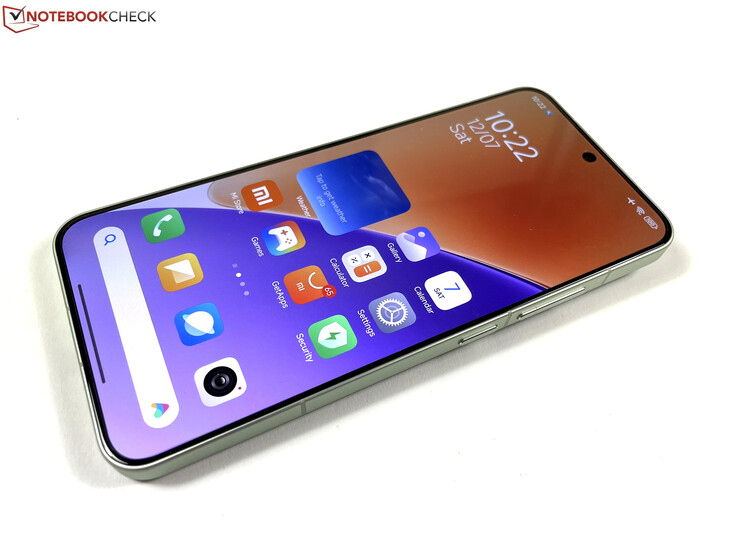
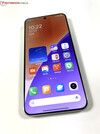





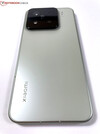
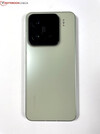





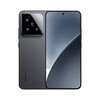





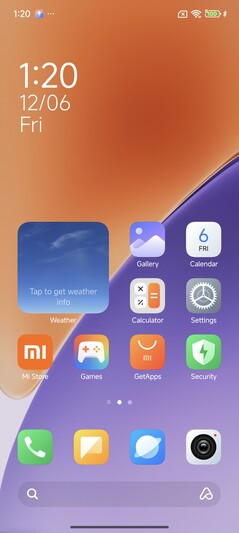
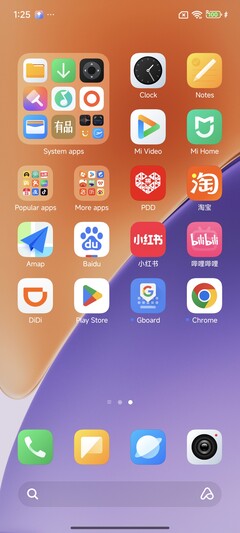




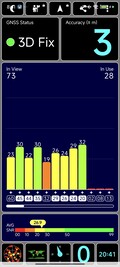
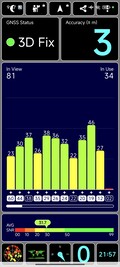











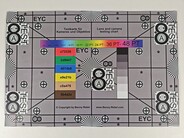



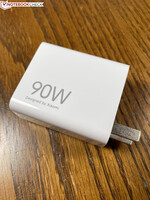











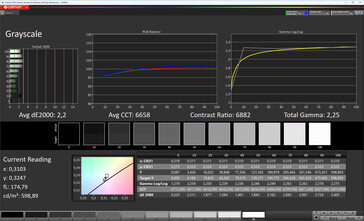
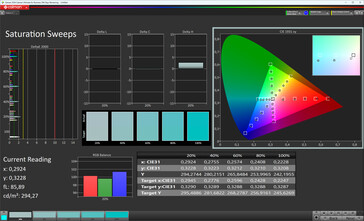
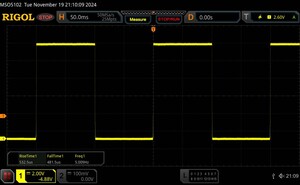

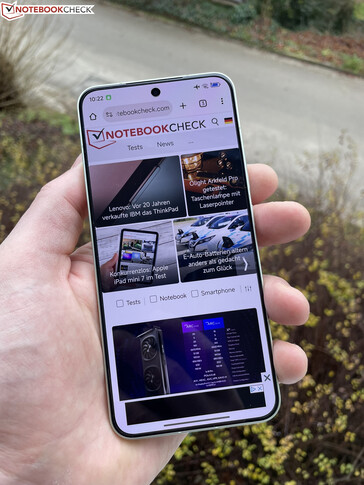
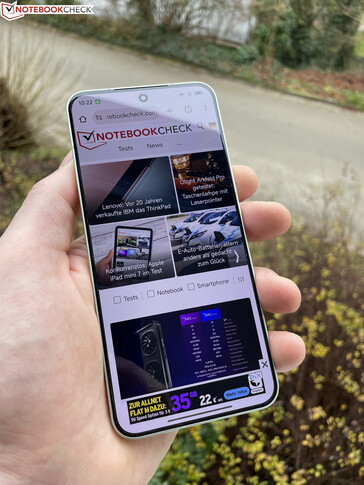



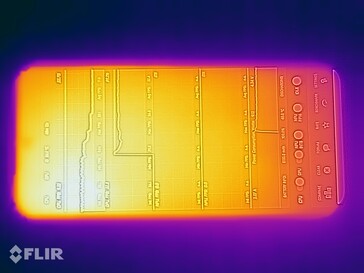
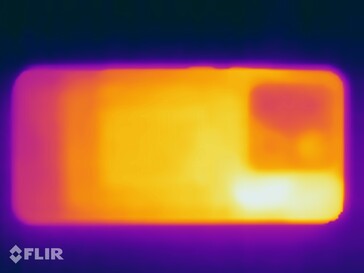
 Total Sustainability Score:
Total Sustainability Score: 

